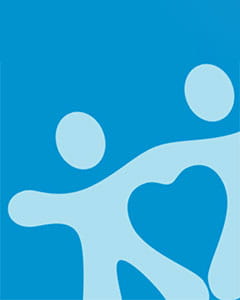Caring for bumps, bruises and boo-boos
Kids are invincible- or at least they think they are! They fearlessly jump into the air, ride a little too fast on their bikes, and like to play roughly with friends or siblings. It’s all fun and games, until someone gets hurt. Cuts, scrapes, and bruises are a regular occurrence in many family homes and it is important to be prepared when accidents do happen. Minor injuries are inevitable and can be cared for properly with the right tools and education.
The ingredients of a first-aid kit
Walking through the aisles at the pharmacy can be overwhelming and confusing when trying to decide what to include in your family’s at-home first-aid kit. Here are some basic essentials to help care for those future bumps and bruises:- Adhesive tape
- Gauze pads
- Disposable gloves- for protection or to use as an ice pack
- Disposable instant cold packs
- Polysporin antibiotic cream
- Nonadhesive pads
- Adhesive bandages in different sizes
- Tweezers to get debris, dirt and grass out of open wounds
How to treat minor cuts and scrapes
Not only is it important to have the necessities in your first-aid kit, it’s also important to know how to use them! Let’s use this scenario- your child has fallen off his/her bike and you hear screaming and crying outside- now what?The first thing to do is assess whether your child’s cuts are minor, or if they need medical attention. If a cut looks to be deep, or at least ½ inch long, call your pediatrician immediately.
Deep cuts can damage muscles, nerves, and tendons, even if it doesn’t appear to be bleeding excessively. If a cut is long, or on your child’s face, neck, or back, it may result in a disfigured scar. To help prevent this, stitches may be needed. If you are unsure if a cut is treatable at home, call your pediatrician for assistance. However, minor cuts and scratches can be treated at home, with the tools in your first-aid kit.
First, let’s discuss what not to do. It’s best not to clean your child’s wound with hydrogen peroxide or alcohol. Although these are commonly used because they can kill bacteria, these substances are also damaging to the surrounding skin tissue. Instead, clean the open wound with cool water. Yes, water! After cleaning the wound with water, gently remove any debris found in the wound. Then, gently clean around the wound with a non-irritating soap and washcloth.
After the wound is clean, you may apply an antibiotic cream to keep the area moist and to prevent infection. Cover with a bandage to keep the wound from reopening and allow for proper healing. Change the bandage daily to keep the area clean and free of infection. Over time, a scab will appear. Scabs are a good thing and are a sign of healing! Keep your child from picking at the scab to prevent or reduce future scarring.
How to treat minor burns
Burns are some of the most common childhood injuries. A minor burn only involves the top layer of skin and will have redness, pain, and minor swelling of the affected area. This type of burn does not cause the skin to blister, but may result in peeling of the top layer of skin within the first few days.More extensive burns are characterized by redness, severe pain, and blisters. The most serious burns can look waxy, white, leathery, brown, or charred and appear dry. The area may feel numb or result in little pain due to nerve damage. If you think your child has experienced a serious burn, seek medical help immediately to ensure proper care.
If your child has a minor burn, it can often be cared for at home. First, apply a cool cloth to the area or run under cool water immediately. After cooling the area, clean with soap and water. Apply a clean, dry bandage.
Don’t apply butter or other oily substances to the burned area, and if blisters form, don’t break them- both of these things can cause further damage to the sensitive area. Encourage kids not to peel skin resulting from the burn to reduce scarring.
An over-the-counter pain reliever such as ibuprofen or acetaminophen can be helpful to reduce the pain associated with the burn, if necessary.
Now you have the tools to be a pro at at-home wound care! Help make the injury less traumatizing for your kids by purchasing fun bandages, walking them through how you are caring for their “boo-boo”, and comforting them to make them feel better.







